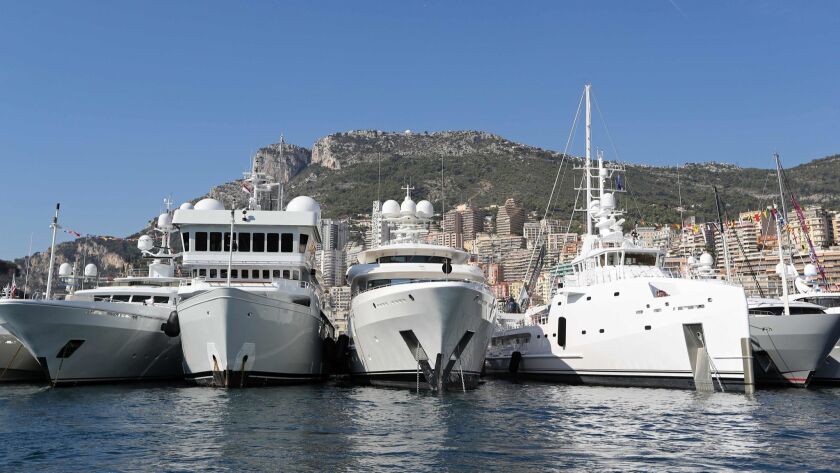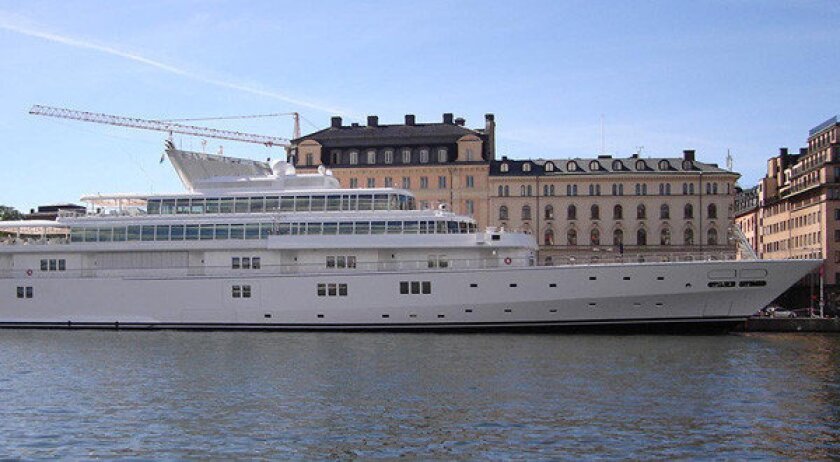
Hola Everyone!
I am tying up this article from the LA Times regarding those super-rich people wanting to buy more luxury yachts to a scene from this novel “Words Unspoken, Things Unseen” and the main reason why i have this blog for all of you to enjoy. Please make sure to get a copy of my novel from the link available here in my blog.
The story is linked to the scene wherein Molca( the Boxer) is meeting a prostitute that he tried to help change her life.
…
“ORALE, GLADYS!” OUT on the streets, in front of the mission, Guzmán recognizes a working girl that the settlement tried once to rescue from her pimp. “ Up late, chica . It’s chilly tonight”
“Keep me warm?” She pops her gum. “ Wanna play doctor?”
“I’m in training,” he replies, on a trek to warn the priest about the raid. “You hear the racket tonight?”
“Scared away business,” she yawns,
“E Flat tore up the plants. Seen anything yourself?”
“You got money to pay? Gladys fires back. “Charity’s for Sunday mass.”
“Me, i’m heathen,” Guzmán responds. “But the priest’s done right by us. And now someone wrecks the garden. Not from need, just spite. They’re up to something. But don’t bother yourself.”
The scene at Port Hercules in Monaco as yachts gathered for the 2017 Monaco Yacht Show.(Valery Hache / AFP/Getty Images)By BENJAMIN STUPPLESBLOOMBERG OCT. 5, 2019
Gazing across the sun-dappled harbor in Monaco, even the fathomlessly rich might get the feeling that some people have more money than they know what to do with.
Floating in Port Hercules the other week — ensigns fluttering, halyards singing — was one of the most spectacular displays of seagoing craft ever seen: 125 superyachts with a combined value of $4.4 billion.
The mine’s-bigger-than-yours lineup at the Monaco Yacht Show was yet another sign of how the wealth of today’s ultra-rich is remaking the world in ways that might make many ordinary people cringe. Six hundred million dollars? For a boat?
Even Henk de Vries, one of the world’s foremost superyacht builders, has conceded that no one needs one.
“I make the most unnecessary product that you can want, and I make it so nice that you still want it,” he said a decade ago.
Even at a time of worrying inequality and anxiety over climate change, an astonishing number of the super-wealthy want superyachts — so many, in fact, that the De Vries family and its chief yacht-building rivals, the Lurssen and Vitelli clans, have become fabulously rich themselves.
“You’re essentially building a small skyscraper that floats on the water,” said Martin Redmayne, chairman of the Superyacht Group, a London-based media company. To be successful, these shipyard owners must have “patience, time and passion — absolute passion. It’s a very long game.”
The business of building oceangoing palaces really got going in the Gilded Age when robber barons and their descendants traded up from schooners. The Vanderbilts owned a 332-foot steam-fueled vessel for getaways to Europe, while the J.P. Morgan clan built multiple yachts called Corsair, each bigger and better than the last. The 343-foot Corsair IV was launched in 1930 to sail the family up and down the East Coast and across the Atlantic until it was given to the British navy at the start of World War II.
DEMAND SLOWED IN THE IMMEDIATE AFTERMATH OF THE CONFLICT BUT REBOUNDED AS GREEK SHIPPING MAGNATES, ROYALTY AND HOLLYWOOD MOVIE STARS BECAME YACHT OWNERS.
Paolo Vitelli got his start in 1969 after selling a nightclub business. He used the proceeds to found the yacht maker now known as Azimut Benetti.
Italy, at the time, was rocked with labor unrest, but Vitelli imported boats from the Netherlands and later designed and built mass-produced luxury vessels.
He expanded when Benetti, one of the biggest names in the industry, ran into trouble in the 1980s, partly because of the costs of developing Nabila, a 282-foot vessel the owners of which have included Saudi Arabian arms dealer Adnan Khashoggi and President Trump. Vitelli bought the business in 1985 and overnight turned his firm into a boat builder for the richest of the rich.
Two years later, stock markets tanked and demand tumbled, but Vitelli, 72, stuck it out through this crash and the global financial crisis two decades later.
These days, business is again booming as Middle East royalty, Russian oligarchs, technology titans and real estate moguls compete for ever bigger or more advanced boats. There are more than 350 under construction currently, according to the Superyacht Group, including a 466-footer poised to launch next year code-named Project Redwood. The future owner’s name is shrouded in secrecy.

At more than 400 feet, the Rising Sun is too big to dock at most of the world’s marinas.(Svedenhaus / Wikimedia)
Azimut Benetti is the world’s biggest yacht builder by volume. It reported annual sales — measured in value of production underway — of 900 million euros ($986million) for the year that ended Aug. 31. That’s made the Vitellis wealthy, but the family has little interest in cashing out.“
AN AMERICAN FUND ONCE WROTE ME A CHECK FOR $1.7 BILLION,” VITELLI SAID IN AN INTERVIEW AT AZIMUT BENETTI’S SHIPYARD IN LIVORNO, ITALY. HE DECLINED THE OFFER. “MONEY AND CASH RUIN THE FAMILY AND TAKE AWAY THE PLEASURE OF RUNNING THE COMPANY. YOU HAVE TO HAVE RULES AND SIMPLICITY TO LOVE THE REAL THINGS.”
That was evident in March, when Vitelli launched “IJE” with the customary Champagne bottle shattering against the side, green, white and red confetti fluttering into a blue sky and Luciano Pavarotti’s voice echoing from throbbing speakers. The 354-foot yacht, built for Australian casino magnate James Packer, comes with a cinema, sauna and fire pit.
It’s a monster by most standards and spent the week of the Monaco Yacht Show off Italy’s western coast. The Monaco event started in 1991 as a place for owners, brokers and fans of megaboating to gawk at the latest designs. The inaugural show featured 32 vessels. Last month, four times that number were on display during a week that drew more than 30,000 visitors to Monaco, including Robert Redford and Gwen Stefani.
But the undoubted stars of the four-day event were the gleaming boats.
Germany’s Lurssen displayed the 364-foot Tis, which comes with a massage room, helipads and nine cabins. It’s owned by Russian commodities trader Alexei Fedorychev and is available for mere mortals to rent for $2.2 million a week, plus expenses.
Lurssen announced plans for Tis three years ago, a typical time frame for the biggest custom superyachts. The process starts with a naval architect and designers, and involves teams representing the owner and project managers, as well as thousands of hours of labor for shipyard workers.
Lurssen traces its roots to 1875, when 24-year-old Friedrich Lurssen started a boatyard near Bremen. At first, he made only rowboats, but later pioneered motorboats with a founder of automaker Daimler. Peter Lurssen, Friedrich’s great-grandson, now leads the company, which helped build the 414-foot superyacht of late Microsoft Corp. co-founder Paul Allen. About a third of the German firm’s business is from repeat clients, Peter Lurssen said at a Superyachts.com event in London this year.
“So we must be doing something right,” he said.
But for all the riches floating around, there are ominous signs.
Rising inequality and a populist backlash have put a spotlight on the world’s richest and their toys. British retail billionaire Philip Green’s Lionheart — made by Azimut Benetti — has become a focus of outrage, highlighted by the media each time Green closes stores and cuts jobs.
In the U.S., the world’s top yachting market, Sens. Bernie Sanders (I-Vt.) and Elizabeth Warren (D-Mass.) have proposed wealth taxes as they campaign for the 2020 Democratic presidential nomination. Across the Atlantic, left-wing firebrand Jeremy Corbyn is vying to lead the U.K., while China’s super-rich are braced for the possibility their government may go after the wealthy to provide tax cuts for the masses.
There’s also the risk that another global recession could slow sales.
And it’s not just politicians and the global economy to worry about, either. The next generation of the uber-wealthy may have different attitudes toward such fuel-guzzling symbols of conspicuous consumption.
Azimut Benetti, Lurssen and Dutch yacht builder Feadship, which is half-owned by the De Vries family, have pledged to cut carbon emissions, but that’s not easily done for ships that can burn 130 gallons of diesel an hour.
“A lot of clients are looking at trying to be environmentally friendly,” said Sean Bianchi, head of new construction at broker Burgess. Options for new yachts include on-board battery banks and installing hybrid or electric motors. But “there is only so far you can take a luxury yacht down that environmental route,” he said.
Vitelli, though, is optimistic as he prepares to hand the reins to his daughter, Giovanna, 44, with hopes of starting a dynasty to rival the Lurssens and De Vrieses.
“Her children, although they are young, are already dreaming of becoming the third generation at the company,” Vitelli said. “The idea that we could have 100 years of history is appealing to me very much.”
About the Author
Written by Joe Rodríguez
Joe Rodríguez is a novelist, literary critic, war veteran, licensed vocational nurse and university professor who once slept on a steam grate at the very college where he would later teach. Rodríguez served in Vietnam from 1965-1966 and earned his bachelor’s degree in philosophy from San Diego State University in 1967. He went on to earn his Ph.D. from the University of California, San Diego, in 1977, and he taught in the department of Mexican American studies at San Diego State University. Rodríguez is also the author of “Oddsplayer” – a novel about Latino, Anglo and African American soldiers in the Vietnam War – and he is currently in the process of publishing his third book, “Growing the American Way” – a novel about a group of people who grow marijuana in secret in the desert, make a small fortune and turn their lives around. He currently resides in San Diego. He can provide knowledgeable commentary on his creative writing process, his experience being homeless, his military service, issues affecting Latin American people in the U.S. and what it was like to grow up in a military family
Recent Posts
Recent Comments
- chubby on L.A. is spending billions to fix homelessness. The problem is only getting worse
- https://pehrsilver.com on L.A. is spending billions to fix homelessness. The problem is only getting worse
- Silver Earrings For women online on L.A. is spending billions to fix homelessness. The problem is only getting worse
- Buy Silver Jewelry Online for women on L.A. is spending billions to fix homelessness. The problem is only getting worse
- Buy modern Silver Jewelry Online for Women in india on L.A. is spending billions to fix homelessness. The problem is only getting worse


